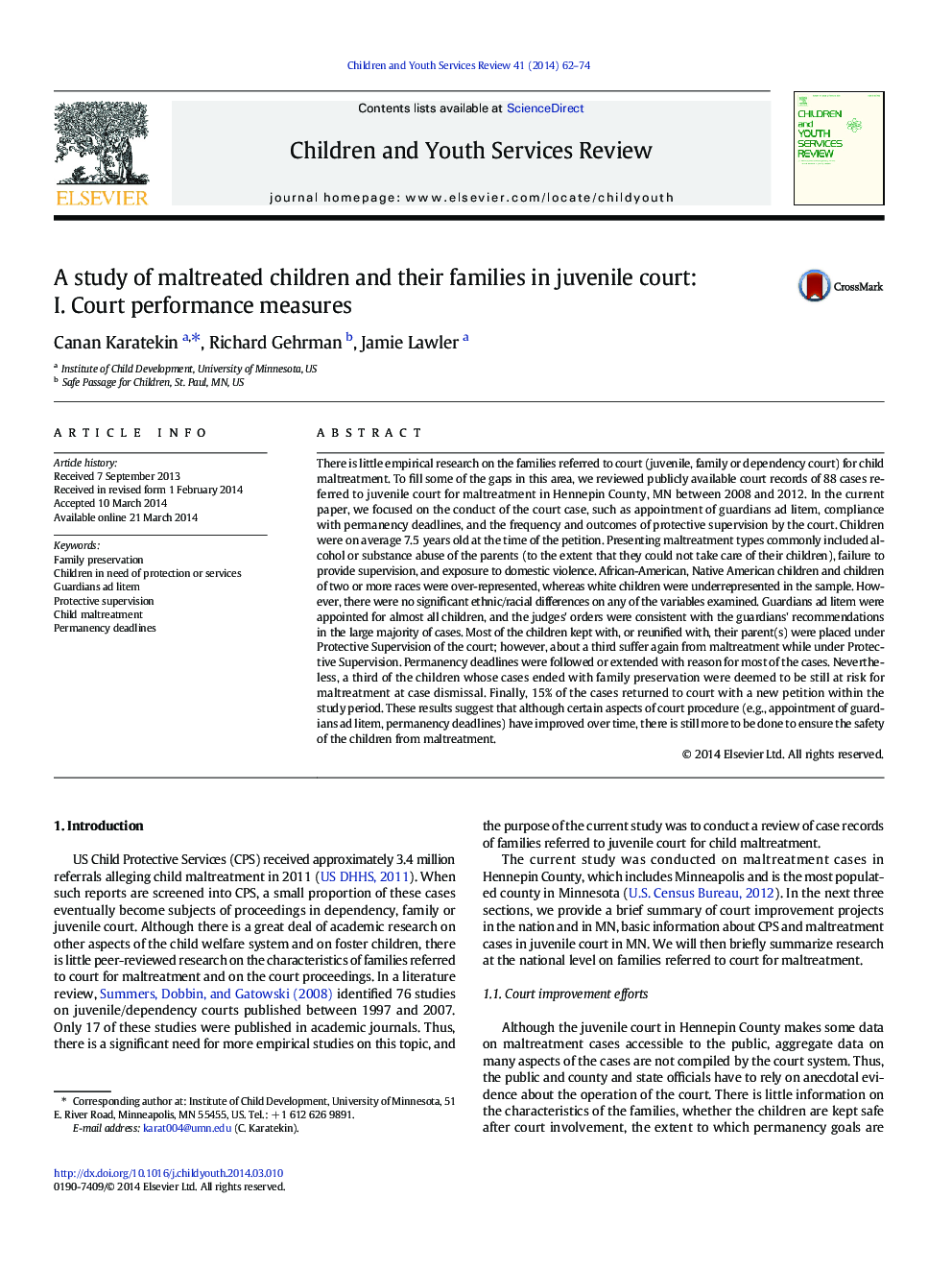| Article ID | Journal | Published Year | Pages | File Type |
|---|---|---|---|---|
| 346034 | Children and Youth Services Review | 2014 | 13 Pages |
•We reviewed court records of 88 cases referred to juvenile court for maltreatment.•Most minorities were generally over-represented.•Guardians ad litem were appointed for almost all children.•A third of the children were maltreated again while under Protective Supervision.•29% of cases ending with family preservation were at risk for further maltreatment.
There is little empirical research on the families referred to court (juvenile, family or dependency court) for child maltreatment. To fill some of the gaps in this area, we reviewed publicly available court records of 88 cases referred to juvenile court for maltreatment in Hennepin County, MN between 2008 and 2012. In the current paper, we focused on the conduct of the court case, such as appointment of guardians ad litem, compliance with permanency deadlines, and the frequency and outcomes of protective supervision by the court. Children were on average 7.5 years old at the time of the petition. Presenting maltreatment types commonly included alcohol or substance abuse of the parents (to the extent that they could not take care of their children), failure to provide supervision, and exposure to domestic violence. African-American, Native American children and children of two or more races were over-represented, whereas white children were underrepresented in the sample. However, there were no significant ethnic/racial differences on any of the variables examined. Guardians ad litem were appointed for almost all children, and the judges' orders were consistent with the guardians' recommendations in the large majority of cases. Most of the children kept with, or reunified with, their parent(s) were placed under Protective Supervision of the court; however, about a third suffer again from maltreatment while under Protective Supervision. Permanency deadlines were followed or extended with reason for most of the cases. Nevertheless, a third of the children whose cases ended with family preservation were deemed to be still at risk for maltreatment at case dismissal. Finally, 15% of the cases returned to court with a new petition within the study period. These results suggest that although certain aspects of court procedure (e.g., appointment of guardians ad litem, permanency deadlines) have improved over time, there is still more to be done to ensure the safety of the children from maltreatment.
